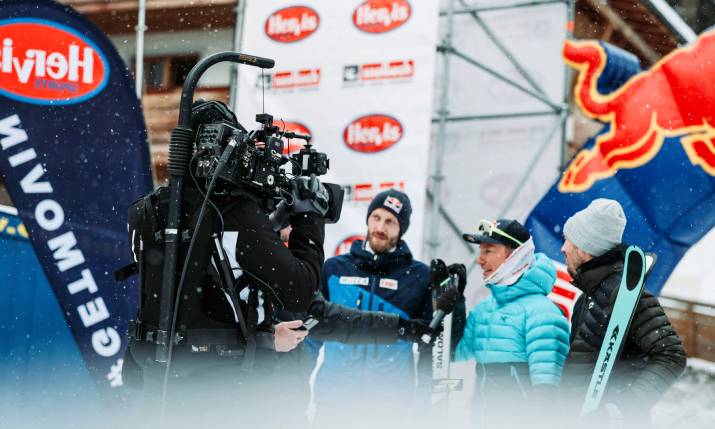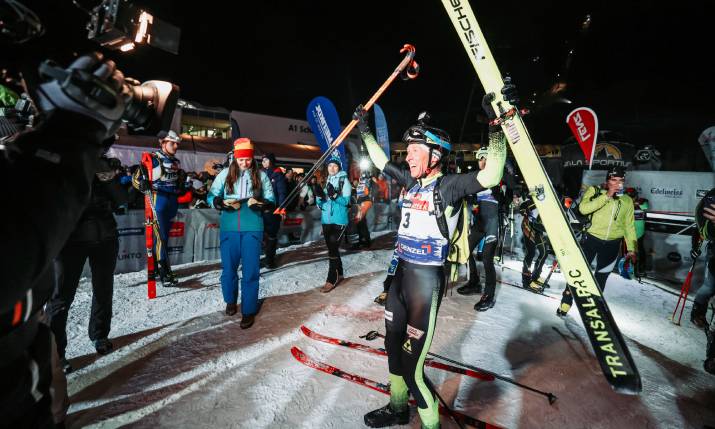Streaming on skis: Mediahaus talks trialling SRT over 5G in a live first at the 2024 Mountain Attack

The Hervis Mountain Attack ski mountaineering race is one of the toughest competitions of its type in the world
Host broadcaster of the recent Mountain Attack ski mountaineering race event in Austria, Mediahaus, took the opportunity to use the event for a proof-of-concept remote production of live SRT streaming from Blackmagic USRA G2 Broadcast cameras over a 5G network.
The event, which took place on 19 January, was the 26th edition of the race, which is considered to be one of the toughest ski mountaineering competitions in the world. Race director Wolfgang Angermüller, CEO at Mediahaus, recalls how the technology is helping to revolutionise coverage of the challenging race, and how it could provide an alternative OB route for REMI sports productions going forwards.
“It’s Austria’s premier ski mountaineering race, which has presented significant challenges for us. Our journey with Mountain Attack began 11 years ago when we first collaborated with race founder, Roland Kurz. Initially, our objective was modest: setting up two cameras on two summits. However, our ambitions and capabilities expanded over time.
“We progressed to installing fibre connections, utilising cable car stations atop the mountains for this purpose. This eventually led to a set up comprising four cameras on four summits. These cameras were connected via SDI to an encoder and then via an IP connection situated in the cable car to the public internet.

Mediahaus ran a proof-of-concept remote production of live SRT streaming from Blackmagic USRA G2 Broadcast cameras over a 5G network at the 2024 Mountain Attack
“We also use bonded cellular from Vislink/Mobile Viewpoint for our URSA Broadcast G2s mounted on Skidoos. This set up was instrumental in following the race leaders’ downhill at speeds of 60kph. Despite these technological advancements, the setup phase remained a challenge, often requiring one to two days to install all cameras and encoders on the mountaintops.
“This year, we asked Austrian telco Drei Österreich if there was any chance we could have our summit camera positions connected via 5G. Drei Österreich revealed it was building a standalone 5G network in the valley for the Skiing World Championship later this year, and luckily the 5G network was ready in December.
“Our plans also aligned with Blackmagic Design. Camera 8.5 beta was released that same month, allowing SRT streaming out of our URSA Broadcast G2 cameras; we just needed to plug in a mobile phone to establish the data stream,” continues Angermüller. “We took the URSA cameras to do some tests at Hutchison’s laboratory in Vienna with SRT streaming. Hutchison provided us with the mobile phones, 5G SIM cards and special prioritisation to allow 5G to have the maximum upload and download rate.
“We then carried further tests in our Salzburg studio, before heading up one of the event summits and tried it in the real world, easily configuring IP addresses to connect the cameras with Blackmagic’s ATEM Streaming Bridges, which receives the SRT signal in our OB truck.”
With a Samsung mobile phone connected via USB-C to a URSA Broadcast G2, Mediahaus successfully streamed 5Mbps H.264 over SRT with a latency of just half a second.

Cold conditions and working at night tested the set up for Mediahuas’ trial of live SRT over 5G
Angermüller goes on: “Not only that, it also gave us all the telemetry from the camera, including tally and camera control, with the decoded streams feeding into an ATEM Constellation 8K switcher. Two weeks before the race, we realised there was one summit where the 5G connection didn’t work. So, we used a Starlink connection there, also with just half a second latency. We also had two WiFi access points on another summit to ensure that if there was no 5G, the mobile phones could switch to the wireless connection.”
Weather conditions in the mountains were as low as -15°C with heavy snow, and as the races started at 4pm, they ended well into the night. The dramatic live coverage of the Mountain Attack proved the case for live production using SRT streaming out of the URSA G2 Broadcast.
“One of the hardest summits to reach turned out to be the summit where 5G worked without any problems,” says Angermüller. “Our operator took his camera and the mobile phone and headed up there. It was so much easier not needing to bring an encoder and SDI cables; the camera battery powered the phone. We saved a whole day of working time with this approach.
“Vislink also supplied us with the new 5G versions of its Mobile Viewpoint AirLink for our camera crew on the Skidoo. That also worked well with the standalone 5G network, though we didn’t have the telemetry and the tally with that particular setup. There was also two seconds of latency on the AirLink, compared to half a second with SRT. We always had to remember that if we switched to that camera.”
Angermüller concludes: “SRT streaming out of the Blackmagic cameras unlocks huge potential in terms of remote production in the future. The camera operators don’t have to worry about setting up anything or plug-in cables. They don’t have any cabling or encoders to carry, and the mobile phone is powered by the camera battery. They open the setup, enable the streaming, and do what they do best, being creative and getting the best shots.”


